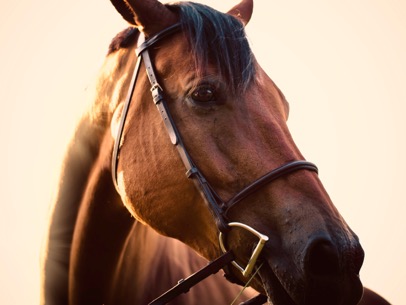Three Things You Didn’t Know About Horses
Posted by Mary Jane on Jan 22nd 2018

Horses have evolved over the last 50 million years, fine-tuning their distinct features and characteristics through natural selection. Researchers believe that the ancestors of today's breeds came from North America as small multi-toed creatures known as Eohippus. Now, single-toed horses are found all over the world with hundreds of breeds.
The domestication of horses began about 6,000 years ago. However, we still have a lot to learn about these beautiful, majestic creatures. The more we learn, the better we are able to communicate with and understand them. Here are a few fun facts, misconceptions, and curious behaviors explained.
Horses Have Elephant Memory, Too!
Did you know horses have a memory that rivals that of the elephants? Research shows that horses will remember just about anything they’ve learned, good or bad, in their lifetime. That means it’s crucial to train your horses with precision and love.
Even without regular practice, a horse remembers what it has been taught. One study even shows horses recalling an exercise two years after being trained and without practicing in the meantime. That's impressive. On the flip-side, a bad experience will stay with the animal as well and can deeply affect its temperament.
Dramatic Facial Expression is a Way of Breathing
Have you seen horses making funny faces? They have a laughable expression with their teeth protruding, lips curling upwards, and nostrils flaring. You might think they’re laughing at you, but this dramatic facial expression is actually a way of taking in scent. The olfactory system of a horse can help identify people and other horses including a newborn foal. Those scents get locked away in that elephant-like memory, allowing horses to identify the closest members of their herd. Their keen sense of smell also helps keep them alert to predators and lurking dangers.
Horses Communicate Via Body Language Instead of Sound
We often think of the distinct sounds horses make – they neigh and whine and flutter their lips. You might assume this is their basic form of communication, but you’ll be surprised to learn this has little to do with how they talk to one another. Horses communicate largely through a subtle body language. Their posture and gaze are very articulate movements that express emotions, desires, and needs. Pinned ears usually indicate frustration or anger, but ears forward show their piqued interest.
As humans, we can learn to recognize what a horse is trying to tell us. If we make the effort to bridge the gap between species, we come closer to understanding the complex minds of horses and create space for deeper and more connected relationships. It’s important to explore human-to-animal communication, so we can avoid thinking that dominance is the only way to train horses. It’s up to us to learn their languages and talk to them in ways they can understand.
Did you learn anything new about horses? The next time you find yourself in the company of a graceful and intelligent horse, do take a moment to appreciate its mystery, complexity, and the beauty of its ancient lineage.

